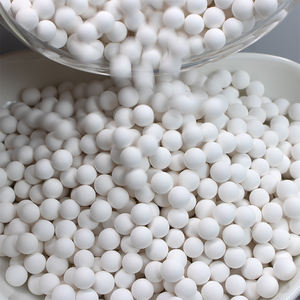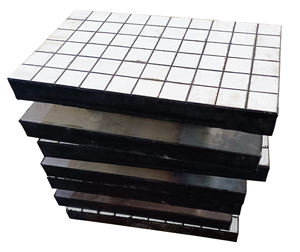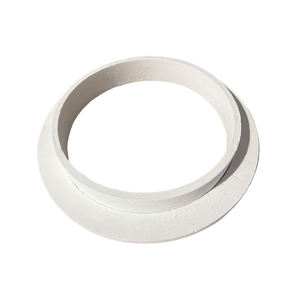Discover Premium Ceramic Products | Durability & Elegance United | Advanced Ceramics
1. Introduction
Just 24 hours ago, NASA announced a breakthrough in reusable rocket engine testing, where components lined with advanced ceramics—including silicon carbide crucibles—enabled sustained operation at temperatures exceeding 1,600°C. This milestone underscores a quiet revolution: silicon carbide isn’t just for foundries anymore. In niche, high-stakes industries, the silicon carbide crucible has become an unsung hero of thermal stability, chemical resistance, and structural integrity.

Silicon carbide crucibles are engineered from ultra-hard, refractory silicon carbide ceramic, prized for its ability to withstand extreme heat without deforming or reacting with molten materials. But beyond traditional metallurgy, these crucibles—and their cousins like silicon carbide ceramic tubes, rings, and plates—are enabling innovations in fields most consumers never see.
2. Semiconductor Crystal Growth: The Heart of Modern Electronics
2.1. Why Silicon Carbide Crucibles Excel Here
In the production of silicon carbide (SiC) and gallium nitride (GaN) semiconductor wafers, purity is non-negotiable. Even trace contamination can ruin an entire batch. Silicon carbide crucibles provide a chemically inert environment during physical vapor transport (PVT) growth—a method used to create high-quality single-crystal SiC ingots.
Unlike graphite or alumina alternatives, silicon carbide crucibles don’t introduce carbon impurities or react with aggressive vapors at 2,200°C. This makes them indispensable in fabs pushing the limits of electric vehicle and 5G chip performance.
2.2. Supporting Components in the Ecosystem

The process also relies on complementary parts like silicon carbide ceramic columns for structural support and silicon carbide thermocouple protection tubes to monitor temperature without degradation. Even silicon nitride crucible factory output is rising to meet demand for hybrid systems that combine SiC’s thermal conductivity with silicon nitride’s fracture toughness.
3. Aerospace Thermal Protection Systems
3.1. From Crucibles to Custom Heat Shields
Spacecraft re-entering Earth’s atmosphere face temperatures that can melt steel. Engineers now turn to custom silicon nitride heat shields and silicon carbide ceramic tiles—materials originally refined in crucible manufacturing—to protect critical components.
Interestingly, the same sintering techniques used to produce dense silicon carbide crucibles are adapted to fabricate lightweight, porous silicon carbide ceramic tubes and rbsic silicon carbide tile blocks that dissipate heat while maintaining structural rigidity.
3.2. Real-World Impact

Private space firms like Rocket Lab and Relativity Space now integrate silicon carbide-based thermal components into engine nozzles and combustion chambers. Silicon carbide burner nozzles, for instance, endure repeated ignition cycles without erosion—something conventional metals fail to achieve.
4. Advanced Nuclear Research and Fuel Processing
4.1. Handling Molten Salts and Actinides
In next-generation molten salt reactors (MSRs), fuel circulates as a liquid at 700–800°C. Silicon carbide crucibles and silicon carbide ceramic pipes are being tested to contain these corrosive mixtures because they resist both thermal shock and chemical attack far better than stainless steel or nickel alloys.
Researchers at Oak Ridge National Laboratory recently validated silicon carbide ceramic tube insulators for use in high-radiation environments, noting minimal swelling or embrittlement after prolonged neutron exposure.
4.2. Synergy with Other Ceramics
While boron carbide vs silicon carbide debates continue for neutron absorption, silicon carbide wins for structural containment. Meanwhile, silicon nitride ceramic components—like silicon nitride rings and plates—are used in control rod mechanisms due to their high strength and low thermal expansion.
5. High-Purity Laboratory Synthesis
5.1. Beyond Melting: Precision Chemistry
In academic and industrial labs, silicon carbide crucibles are essential for synthesizing high-purity compounds like rare-earth oxides or specialty alloys. Their inertness prevents cross-contamination, and their thermal conductivity ensures even heating—critical for reproducible results.
Specialized setups often pair crucibles with silicon carbide ceramic disc taps for controlled pouring or silicon carbide porous ceramic tubes for gas diffusion during reactions.
5.2. The Rise of Custom Ceramic Labware
Demand has spurred innovation in custom shapes: silicon carbide ceramic casserole dishes with lids for slow reactions, silicon carbide ceramic ramekins for small-scale trials, and even silicon carbide ceramic baking dishes repurposed for high-temp annealing. Though not kitchenware, these items share manufacturing DNA with consumer-grade silicon carbide ceramic dinner plates and serving bowls.
6. Conclusion
From enabling faster chips to shielding spacecraft and containing nuclear fuel, the silicon carbide crucible has transcended its industrial roots to become a cornerstone of advanced engineering. Paired with related components—silicon carbide bricks, tubes, rings, and silicon nitride counterparts—it forms a material ecosystem that thrives where others fail. As industries push further into extreme environments, expect silicon carbide ceramics to remain at the forefront of what’s possible.
Our Website founded on October 17, 2012, is a high-tech enterprise committed to the research and development, production, processing, sales and technical services of ceramic relative materials such as 5. Our products includes but not limited to Boron Carbide Ceramic Products, Boron Nitride Ceramic Products, Silicon Carbide Ceramic Products, Silicon Nitride Ceramic Products, Zirconium Dioxide Ceramic Products, etc. If you are interested, please feel free to contact us.
